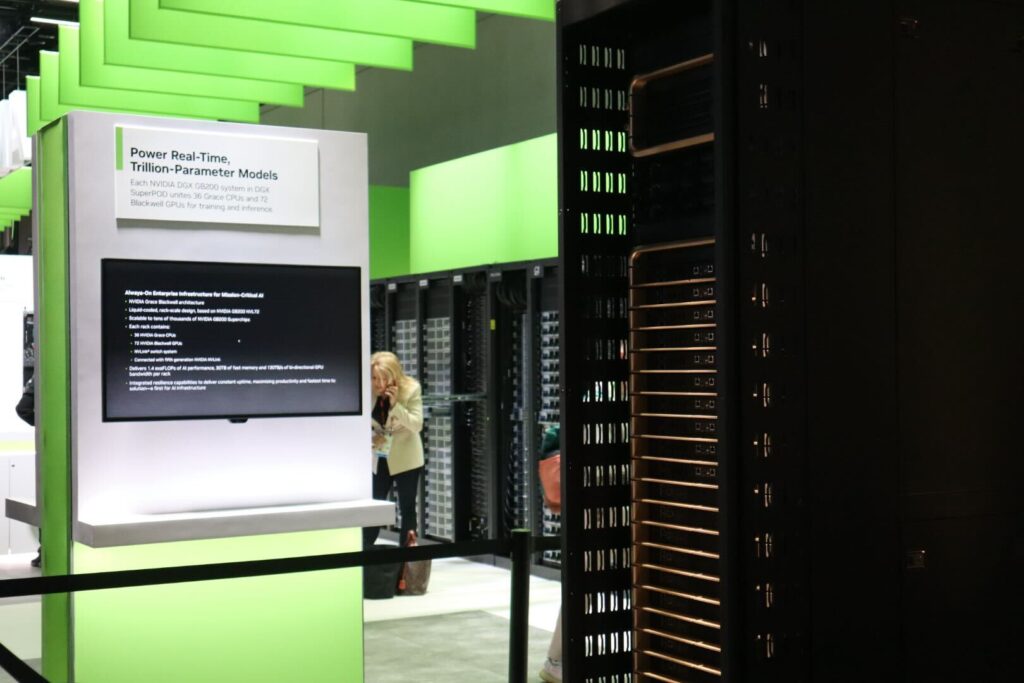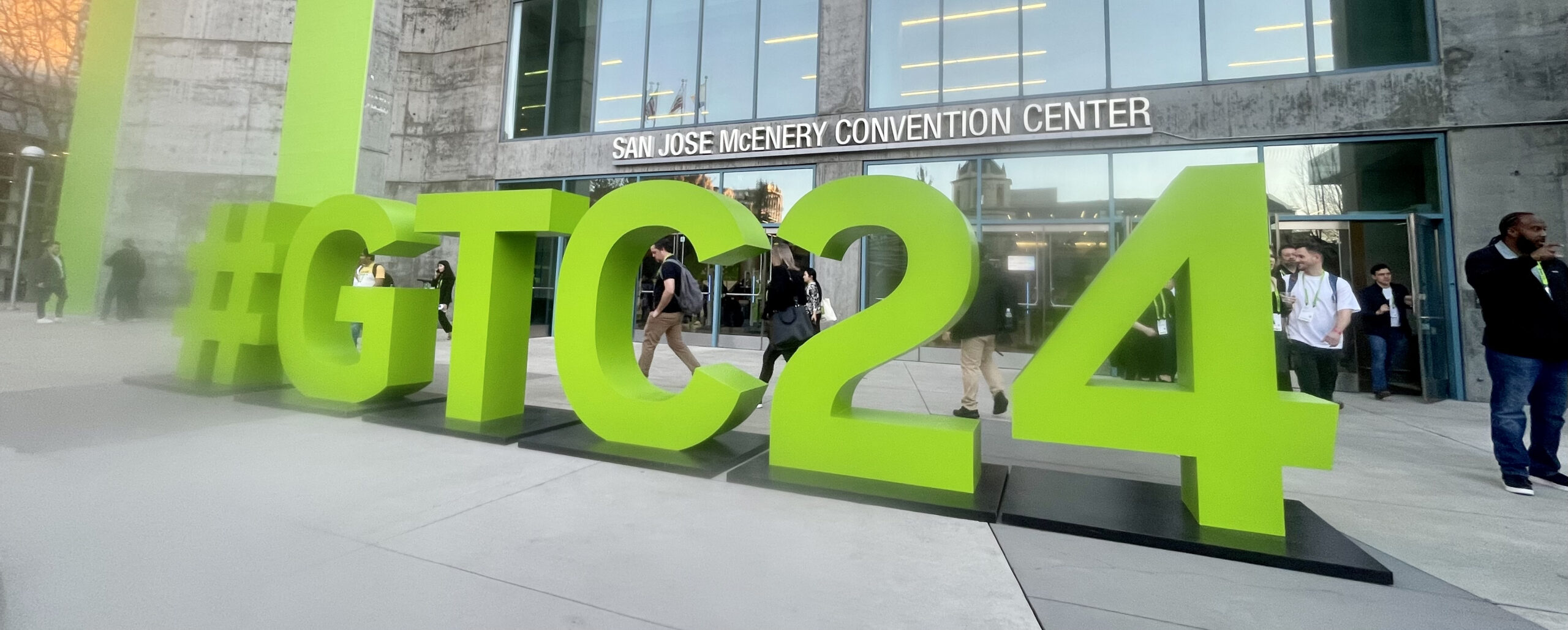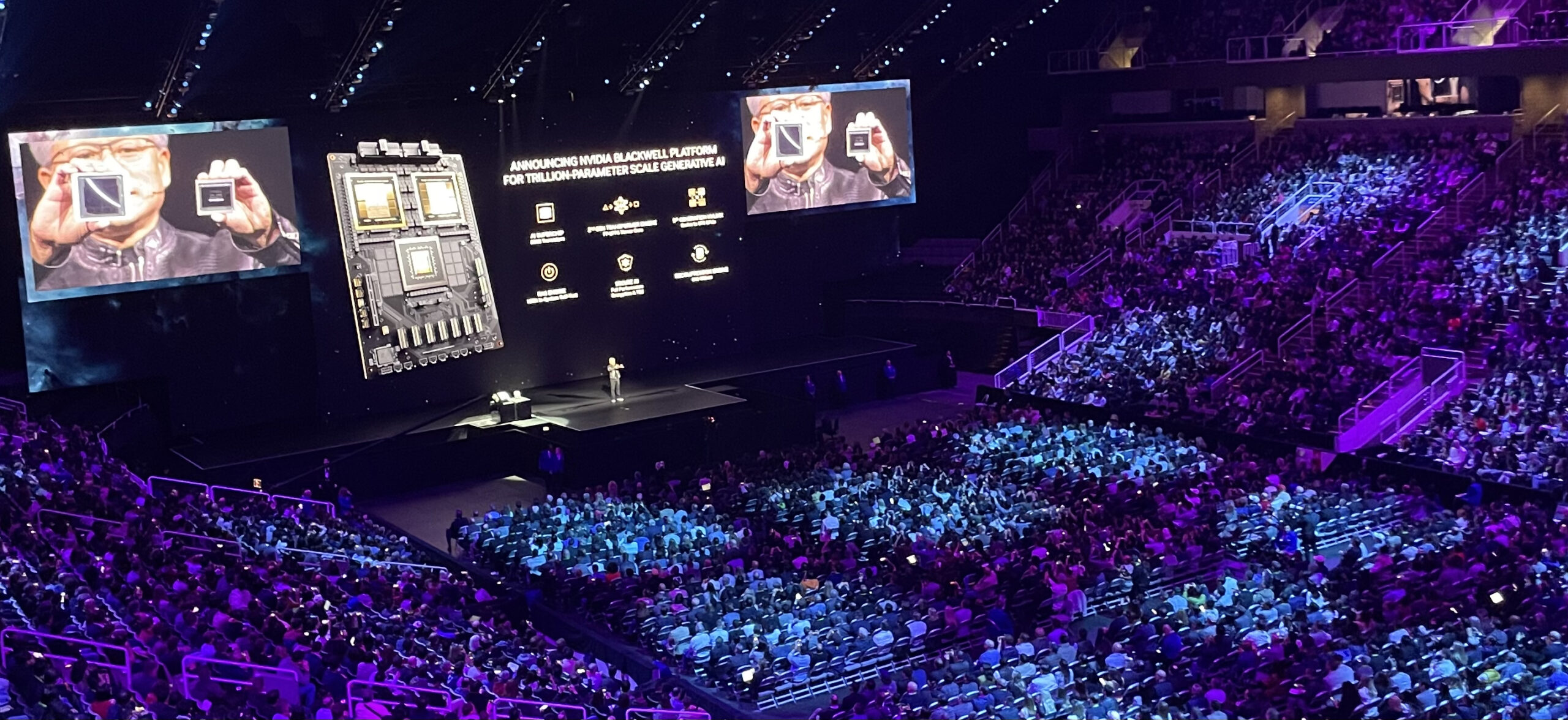By Stelia’s Chief Marketing Officer, Paul Morrison
This year’s red hot GTC (GPU Technology Conference) was a ground-breaking event that showcased Nvidia’s relentless pursuit of AI innovation and its transformative impact across industries. That this was the first in-person GTC since 2019 simply added to the rising mercury in San Jose.
For those who couldn’t attend, let me share some key highlights that demonstrate how AI is changing everything.
GTC attracted over 300,000 registrants, between in-person and virtually, with more than 900 sessions and 300+ exhibitors showcasing how organizations are deploying Nvidia’s platforms. Prominent speakers from OpenAI, Microsoft, Google DeepMind, Meta, Stanford, and more participated, underscoring the widespread impact and interest in AI across the tech landscape.
The 3 Eras of Modern AI
But before diving in, let’s make a quick recap. The history of AI can be divided into three main eras. Era 1, beginning around 2012, was defined by breakthroughs in image recognition using deep learning models like AlexNet. Era 2, starting in 2018, saw the rise of massive language models like BERT and GPT-3 trained on huge text datasets, unlocking powerful linguistic and reasoning capabilities. Today we are in Era 3, focused on making those LLM’s practical to deploy at scale through techniques like compression, retrieval augmentation, and AI accelerators. Era 3 is where AI steps out of the data centre and into our daily lives.
NVIDIA CEO Keynote
Nvidia CEO Jensen Huang’s 2 hour keynote at the 20k capacity SAP Center was a tour de force, setting a new standard for tech presentations. He unveiled the Blackwell architecture comprising the new B200 GPU and Grace Hopper CPU, which together allows for networking a theoretically unlimited number of GPUs together, resulting in an astonishing 1,000 times increase in performance from 8 years prior. This achievement challenges the tech industry’s benchmark, Moore’s Law, and opens up incredible possibilities for AI applications.

5 Key Takeaways from GTC24
NVIDIA’s is perhaps ambitious to bill itself as a distributed hyperscaler – or an Enterprise AI chipmaker in gamer streetwear if you will. And every tech giant needs a visionary leader and here were his 5 key takeaways:
1 – Trillion-Dollar Industrial Revolution: Jensen Huang unveils the trillion-dollar disruption in data centers driven by generative AI. This new approach to software creation requires cutting-edge infrastructure , unlocking immense value through innovative solutions.
2 – Blackwell: Catalyst of the Revolution: NVIDIA’s Blackwell, a trillion-parameter gpu platform, enables the transformative shift, empowering businesses to harness the full potential of generative AI. 120kW per rack and 135 Tbps in the backplane – the data center and networking implications are significant.
3 – Pioneering Software Distribution: NIMs (NVIDIA Inference Microservices) and advanced AI infrastructure revolutionize software creation and deployment, enabling foundry-style proprietary generative applications.
4 – Rise of Robotics: Robotics takes center stage as AI integration redefines efficiency and innovation across industries, transforming the way we live and work.
5 – Omniverse: Foundation of the Digitaltwin Revolution – NVIDIA’s Omniverse digital twin platform underpins the new industrial revolution, enabling businesses to optimize processes, simulate scenarios, and drive unprecedented efficiency.

Four Partners Namechecked by Huang
Four Nvidia partners were highlighted for their AI efforts:
– Apple, with its Vision Pro headset, could potentially herald the next wave of true AI PCs.
– Dell was recognized by Huang as having the best AI solution among PC manufacturers.
– Microsoft stood out among cloud providers for its rapid embrace of Nvidia’s Blackwell architecture.
– Siemens received coverage for its applied AI in large-scale industrial digital twin “Omniverse” projects, serving as an example for companies like Boeing to emulate.
However, the scale of the event also highlighted potential supply constraints for Nvidia’s Blackwell GPUs, with Micron and SK Hynix already sold out of their HBM3E production for 2024. This underscores the immense demand for AI computing and the challenges in meeting it.
Convention Floor Highlights
Back down in the San Jose McEnery Convention Center the show floor was buzzing with the hum of the Nvidia website brought to life for GTC with all their industry verticals, solutions and partners coming alive for this in-person feast of futurism. Naturally a gold-plated Blackwell rack took centre stage on the showfloor, the oohs and aahs of the technology groupies paying homage to the $10 billion R&D investment. Other key standouts from the showfloor:
1 – AWS, Azure, Google Cloud and Oracle were all featured with glossy boothes and interesting use cases for AI. Large Nvidia customer and also competitor, their presence seemed a little self-conscious.
2 – AI demands storage and lots of it. Partners such as Vast Data and Weka are jostling for position as the 800lb data platform of choice.
3 – Bitcoin miners turned AI infrastructure players took large positions on the floor – Coreweave, Nexgen, Northern Data and Crusoe were supplemented by IREN just off the main drag. Time will tell if these new kids “off the block” can match their spend with client revenues whilst achieving Nvidia levels of customer experience.
4 – A surprising number of tech giants appear to have been caught off-guard or simply don’t get AI yet. Equinix, Digital Realty, Cisco all with modest presence and I suspect next GTC we will see a stronger showing from them.
5 – The Nvidia Inception program for smaller partners and start-ups was very well represented around the edges of the showfloor. Out of the 17k members of the program there will be significant companies being incubated before our eyes.
6 – As of now we are in the 3rd era of distributed AI, and almost zero attention is being paid on how to share AI outside the data centre. How can we network all these amazing ecosystem companies together into a cohesive ecosystem to deliver the full potential of AI?. The current Internet and telco networks are incapable of transferring the scale of data at the latencies required on an edge-to-edge or many-to-many basis.. Enter Stelia… I digress.
This brief glimpse into GTC 2024 event makes it clear that AI is not just a trend but a fundamental shift in computing that will redefine industries and shape our future. The transformative power of AI can be leveraged to drive growth, efficiency, and innovation. It’s happening at scale and speed and our challenge is to stay connected and relevant. The future is now.

